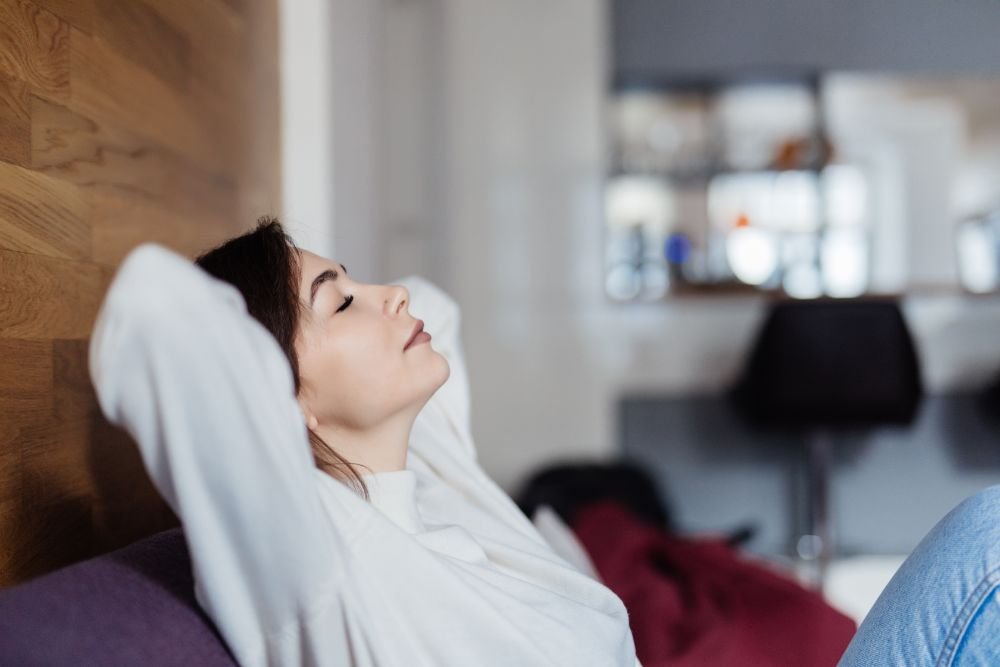Discover the transformative power of breathing exercises for anxiety. Explore effective techniques to calm your mind and body, reduce stress, and regain control.
With simple yet powerful practices, find relief from anxiety anytime, anywhere. Unlock a world of peace and tranquility with breathing exercises for anxiety.
Did you know that anxiety not only affects our mental health but also takes a toll on our physical well-being? It’s a silent intruder that often creeps in when we least expect it, leaving us feeling overwhelmed and disconnected from our surroundings.
But don’t worry, because there’s a powerful, natural remedy that you can try: breathing exercises for anxiety. Yes, you heard that right! Simple, yet highly effective breathing exercises for anxiety can be your go-to solution when those anxious thoughts start to take over.
In this article, we’ll delve into the world of these incredible techniques and how they can help you regain control over your emotions and feel calm and centered in no time.First off, let’s briefly look at what exactly anxiety is and why it’s so important to address it.
Anxiety is a natural response to stress, but when it becomes excessive or unmanageable, it can interfere with our daily lives.
This can manifest as symptoms like rapid heartbeat, shallow breathing, sweaty palms, and racing thoughts. In the long run, it can lead to chronic health issues such as high blood pressure, heart disease, and weakened immune system.
That’s where breathing exercises for anxiety come in. By practicing these techniques regularly, you can train your body to respond more calmly to stressful situations, reduce the frequency and intensity of anxiety attacks, and improve your overall well-being.
Why Breathing Exercises for Anxiety?
Have you ever noticed how your breathing changes when you’re feeling anxious? You might find yourself taking shallow, rapid breaths, or even holding your breath without realizing it.
This is because anxiety triggers the body’s “fight or flight” response, preparing you to either confront the perceived threat or flee from it.
As a result, your heart rate increases, and your breathing becomes faster and more shallow. But here’s the catch – this type of breathing actually reinforces feelings of anxiety and can lead to a vicious cycle of panic and stress.
So, how can breathing exercises for anxiety help break this cycle? Let’s explore the physiological effects of anxiety on breathing and overall health.
When you’re feeling anxious, your body activates the sympathetic nervous system, also known as the “stress response.”
This causes an increase in heart rate, blood pressure, and breathing rate, preparing you for immediate action. However, when the stress response is triggered too frequently or for prolonged periods, it can have detrimental effects on your health.
Enter breathing exercises for anxiety. These techniques work by activating the parasympathetic nervous system, also known as the “rest and digest” response. When you practice deep, slow breathing, you signal to your body that there’s no immediate threat, allowing it to relax and restore balance.
This not only calms your nervous system but also reduces the physical symptoms of anxiety, such as muscle tension and rapid heartbeat.
But don’t just take my word for it – scientific studies have also shown the effectiveness of breathing exercises for anxiety.
Research published in the Journal of Clinical Psychology found that deep breathing techniques significantly reduced anxiety levels in participants, with some even experiencing a complete resolution of symptoms.
Another study, published in the Journal of Psychiatric Research, found that practicing diaphragmatic breathing (a type of breathing exercise for anxiety) improved heart rate variability, a marker of overall health and stress resilience.
So, there you have it – the evidence is clear. Breathing exercises for anxiety are a powerful tool that you can use to manage your anxiety and improve your overall well-being.
The Path to Inner Peace Starts Here: Try InnaPeace Now!
Whether you’re dealing with a sudden panic attack or looking for a way to reduce everyday stress, these techniques can be a game-changer.
Now, let’s dive into the specifics of some breathing exercises for anxiety that you can try for yourself. Get ready to take a deep breath and say goodbye to anxiety!
1. The Role of Deep Breathing in Managing Anxiety

Do you ever feel like your mind is racing and your body is tensing up, leaving you feeling overwhelmed and stressed?
If so, you’re not alone. Many people experience anxiety on a daily basis, and it can take a toll on both our mental and physical health.
But what if there was a simple, natural way to calm your mind and body and regain control? Enter deep breathing, one of the most effective breathing exercises for anxiety.
Deep breathing involves taking slow, deep breaths, expanding your belly rather than your chest.
This allows you to fully engage your diaphragm, the muscle that separates your chest cavity from your abdominal cavity.
When you practice deep breathing, you activate the parasympathetic nervous system, which helps your body relax and reduces the physical symptoms of anxiety.
These can include a rapid heartbeat, shallow breathing, and muscle tension.
So, how can you practice deep breathing techniques? Let’s break it down:
- Find a quiet, comfortable place where you won’t be disturbed.
- Sit or lie down in a relaxed position, with your hands on your stomach.
- Close your eyes and take a slow, deep breath in through your nose, allowing your belly to expand as you do so.
- Hold your breath for a moment, then exhale slowly through your mouth, feeling your belly contract.
- Repeat this process for several minutes, focusing on the sensation of your breath moving in and out of your body.
The benefits of deep breathing for anxiety relief are well-documented. Many individuals who have struggled with anxiety have found relief through regular deep breathing practice.
For example, Sarah, a 35-year-old mother of two, suffered from panic attacks that made it difficult for her to leave the house.
She started practicing deep breathing techniques every morning and evening, and within a few weeks, she noticed a significant reduction in her anxiety levels. Now, she’s able to manage her anxiety more effectively and enjoy a better quality of life.
Transform your life and find inner peace with InnaPeace. Click to learn more!
2. Box Breathing
Box Breathing, also known as tactical breathing or combat breathing, is a simple yet powerful technique used to manage stress and anxiety.
This technique has its origins in the military, where it is taught as a way to help soldiers remain calm and focused in high-pressure situations.
The concept of Box Breathing is based on the idea of breathing in a box-shaped pattern.
This involves four steps: inhaling, holding the breath, exhaling, and holding the breath again. Each step is done for a set duration, usually four seconds, hence the name “Box Breathing”.
Here’s how to practice Box Breathing:
- Sit or lie down in a comfortable position.
- Inhale slowly through your nose, counting to four.
- Hold your breath for another count of four.
- Exhale slowly through your mouth, counting to four.
- Hold your breath for another count of four.
- Repeat this process for several minutes, focusing on the rhythm of your breath.
The great thing about Box Breathing is its versatility. It can be done anywhere, anytime, and requires no special equipment.
Plus, it’s a quick and effective way to calm your mind and body in stressful situations.
Whether you’re dealing with a sudden panic attack or feeling anxious before an important presentation, Box Breathing can help you stay calm and focused.
For example, when Mark, a 45-year-old executive, found himself feeling anxious before a big meeting, he would excuse himself for a few minutes to practice Box Breathing.
He found that it helped him clear his mind, reduce his anxiety, and approach the meeting with a calm and confident demeanor.
3. Alternate Nostril Breathing (Nadi Shodhana)

Another effective breathing exercise for anxiety is Alternate Nostril Breathing, also known as Nadi Shodhana in yoga.
This technique involves alternating the flow of air through each nostril, which helps balance the two hemispheres of the brain and calm the nervous system.
Here’s how to practice Alternate Nostril Breathing:
- Sit in a comfortable position, with your spine straight and your shoulders relaxed.
- Use your right thumb to close your right nostril and inhale deeply through your left nostril, counting to four.
- Use your right ring finger to close your left nostril and hold your breath for a count of four.
- Release your right thumb and exhale slowly through your right nostril, counting to four.
- Inhale through your right nostril, counting to four.
- Use your right thumb to close your right nostril and hold your breath for a count of four.
- Release your right ring finger and exhale through your left nostril, counting to four.
- Repeat this process for several minutes, alternating the flow of air through each nostril.
Alternate Nostril Breathing has been shown to have numerous physical and mental benefits. In addition to reducing anxiety, it can also improve lung function, lower blood pressure, and increase mental clarity.
For example, Jessica, a 30-year-old yoga instructor, struggled with anxiety and insomnia. She started practicing Alternate Nostril Breathing every night before bed, and she noticed a significant improvement in her sleep quality and overall well-being.
4. Four Square Breathing
If you’re looking for a simple yet effective way to calm your mind and body, look no further than Four Square Breathing.
This technique involves taking slow, deep breaths and counting to four on each inhalation and exhalation. It’s a great way to reduce stress and anxiety, and it can be done anytime, anywhere.
Here’s how to practice Four Square Breathing:
- Find a quiet, comfortable place where you won’t be disturbed.
- Sit or lie down in a relaxed position, with your hands on your stomach.
- Close your eyes and take a slow, deep breath in through your nose, counting to four.
- Hold your breath for a count of four.
- Exhale slowly through your mouth, counting to four.
- Hold your breath for a count of four.
- Repeat this process for several minutes, focusing on the sensation of your breath moving in and out of your body.
The great thing about Four Square Breathing is its simplicity. You don’t need any special equipment or training, and you can do it anytime, anywhere.
Whether you’re feeling anxious before a big presentation or just need a moment of calm during a hectic day, Four Square Breathing can help you find your center.
For example, when Emily, a 25-year-old student, was feeling overwhelmed with her coursework, she would take a break and practice
Four Square Breathing for a few minutes. She found that it helped her clear her mind, reduce her anxiety, and approach her studies with a renewed sense of focus.
5. Progressive Muscle Relaxation with Breathing
One of the most effective breathing exercises for anxiety is Progressive Muscle Relaxation (PMR) combined with deep breathing.
This technique involves tensing and then relaxing each muscle group in the body, while also focusing on the breath. It’s a great way to reduce stress and anxiety, and it can be done anytime, anywhere.
Here’s how to practice Progressive Muscle Relaxation with Breathing:
- Find a quiet, comfortable place where you won’t be disturbed.
- Sit or lie down in a relaxed position, with your hands on your stomach.
- Close your eyes and take a slow, deep breath in through your nose, allowing your belly to expand as you do so.
- As you exhale, tense the muscles in your feet, holding the tension for a count of four.
- Release the tension and relax your feet, exhaling slowly through your mouth.
- Repeat this process for each muscle group in the body, working your way up from your feet to your head.
- As you practice, focus on the sensation of your breath moving in and out of your body, and on the feeling of tension and relaxation in each muscle group.
Progressive Muscle Relaxation with Breathing is a great way to reduce stress and anxiety, and it can be done anytime, anywhere.
Whether you’re feeling anxious before a big presentation or just need a moment of calm during a hectic day, Progressive Muscle Relaxation with Breathing can help you find your center.
For example, when John, a 40-year-old office worker, was feeling overwhelmed with his workload, he would take a break and practice Progressive Muscle Relaxation with Breathing for a few minutes.
He found that it helped him clear his mind, reduce his anxiety, and approach his work with a renewed sense of focus.
Conclusion Breathing Exercises for Instant Anxiety Relief
In conclusion, breathing exercises for anxiety are a powerful and accessible tool that anyone can use to manage their stress and anxiety.
These techniques have been shown to have numerous physical and mental benefits, including reducing anxiety levels, improving lung function, and increasing mental clarity.
Whether you’re dealing with a sudden panic attack or just need a moment of calm during a hectic day, breathing exercises for anxiety can help you find your center and regain control.
I encourage you to explore the exercises discussed in this article and incorporate them into your daily routine.
Start with deep breathing, Box Breathing, or Alternate Nostril Breathing, and see how they work for you. Experiment with different techniques and find the ones that resonate with you. Remember, consistency is key – practice regularly and you’ll start to see the benefits.
If you’re interested in further exploration, there are plenty of resources available to help you deepen your practice.
You can find guided meditation videos, online courses, and books on mindfulness and stress reduction. Don’t be afraid to seek out additional support and guidance if you need it.
In conclusion, breathing exercises for anxiety are a simple yet powerful way to manage stress and anxiety. So, the next time you’re feeling overwhelmed, take a deep breath and give these techniques a try. Your mind and body will thank you!





